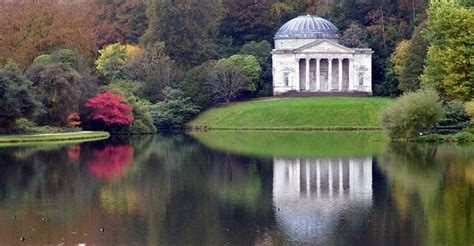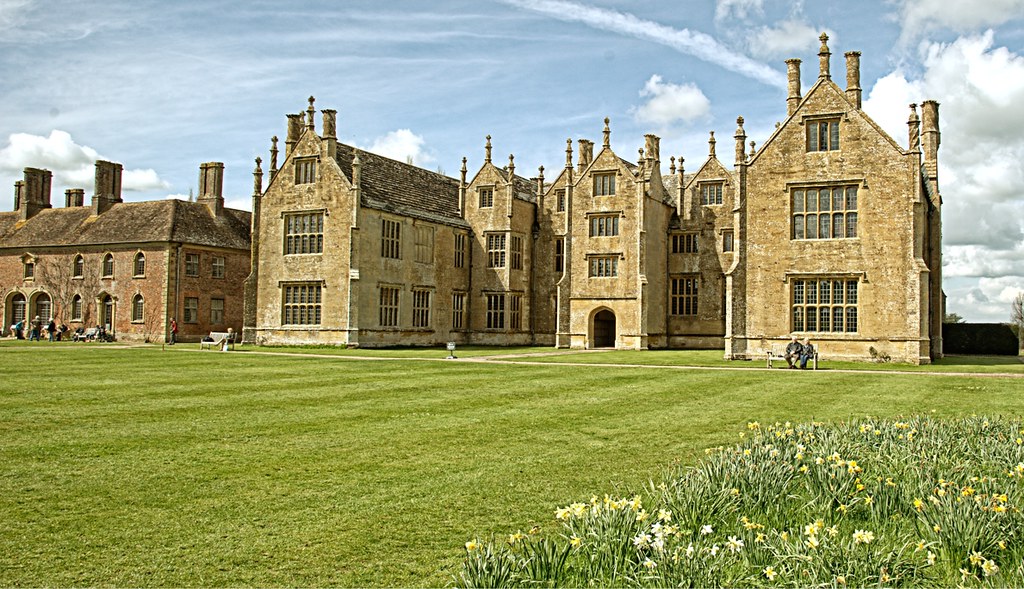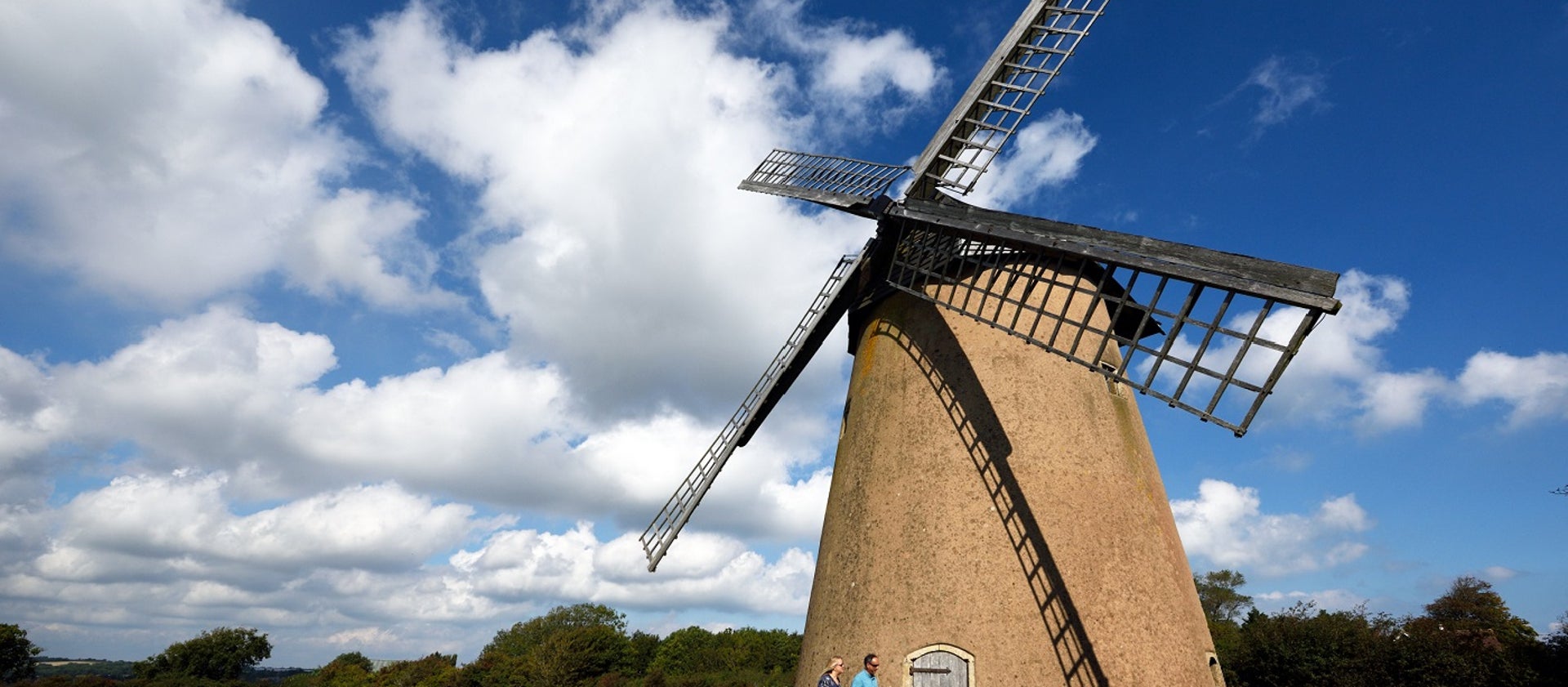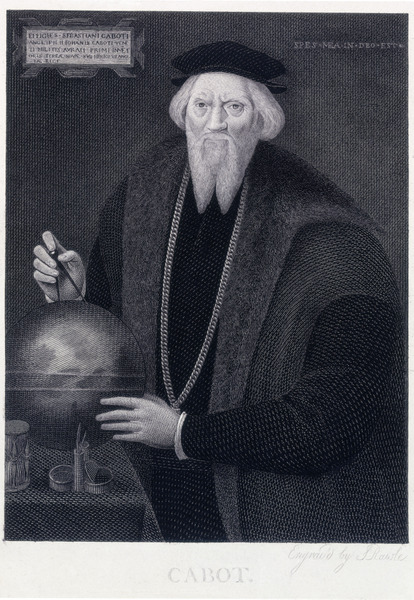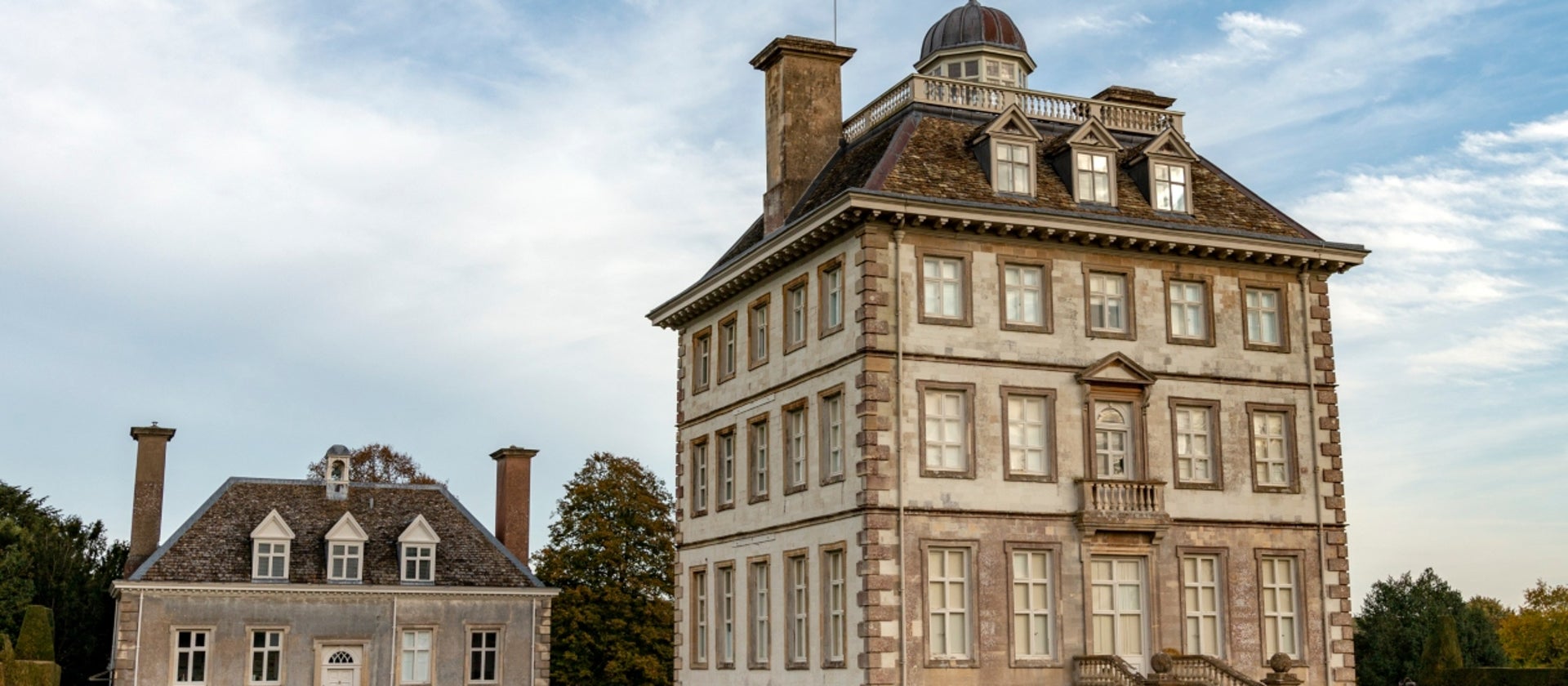Stourhead is a Georgian villa built in the Palladian style and home of the Hoare family from 1725 until 1946, when it was donated to the National Trust. It is the home to over 8000 historic artifacts, including a cabinet built in Rome for Pope Sixtus V, and an original Axminster carpet which is currently being restored. thanks to a generous donation by the People’s Postcode Lottery.
The world famous landscape garden was at the forefront of the 18th century fashion for Italianate gardens. Highlights include a grotto where one can cool off from the summer heat, and a replica of the Pantheon in Rome (illustrated).
The surrounding estate features King Alfred’s Tower, built in 1760 to commemorate the Accession of Mad King George and the end of the Seven Years’ War. Local tradition says that it stands on the site of an earlier tower, from which King Alfred lit a beacon fire to muster the men of Wessex against the Danes, though there is little evidence to support this story.
The satnav postcode for the car park is BA12 6QD. The house is open from 1100-1600, seven days a week. Sadly, it is not served by public transport, with the nearest bus stop being over a mile away.

